Bisti is Navajo for “a large area of shale hills” and is the western portion of the wilderness area. It is characterized by the Fruitland Formation and tends to be deeply eroded and has an abundance of stone formations made of interbedded sandstone, shale, mudstone, coal, and silt.
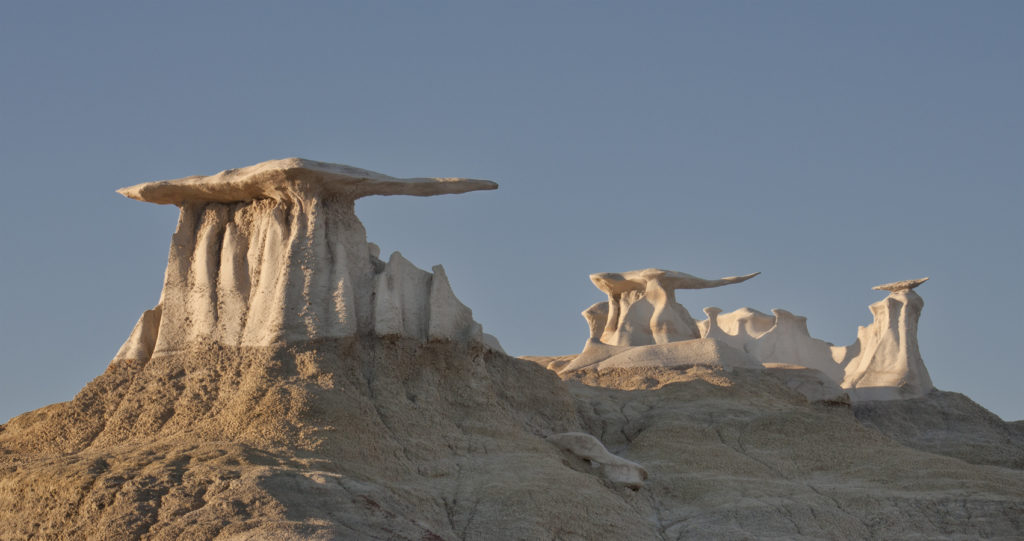
The badlands expose the longest, most complete, and most richly fossiliferous sequence of beds spanning the Cretaceous-Paleogene boundary in any single sedimentary basin in the world. These include four geologic formations, which, in decreasing order of age, are the Fruitland Formation, the Kirtland Formation, the Ojo Alamo Formation, and the Nacimiento Formation.
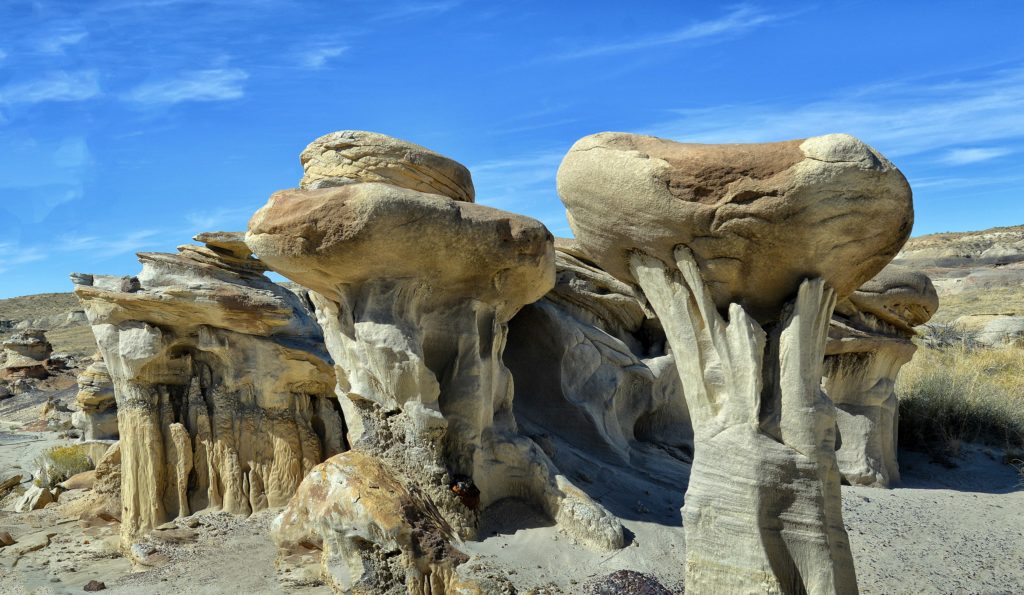
These formations are exposed in an area of east-to-west valleys that drain to the Chaco River to the south. Walking through the Bisti Badlands Wilderness is like entering an alien, prehistoric world of desolate desert and bizarre rock formations.
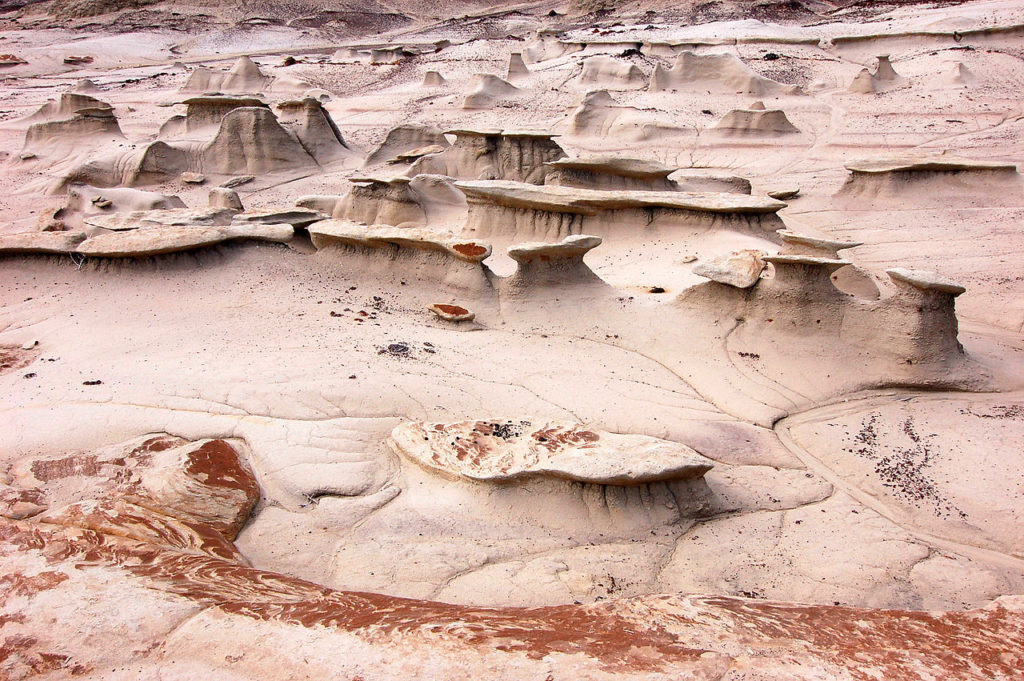
The prehistoric formations dotting the Bisti include the famous Bisti Wings, the Brown Hoodoos, Vanilla Hoodoos, Conversing Hoodoos, the Manta-Ray Wing, the Alien Egg Hatchery, and innumerable areas of petrified logs. Photos of these formations are a once-in-a-lifetime opportunity. But, for first-time visitors, it is not easy to find these hidden spots. Sometimes people are unable to find hoodoos, or they can find only part of them.

The many fossils preserved in this region make this one of the best places on Earth to study the fascinating story of the end of the age of dinosaurs and the beginning of the age of mammals. These fossils will not be obvious to casual visitors, but visitors will be instantly struck by the spectacular scenery of this area.
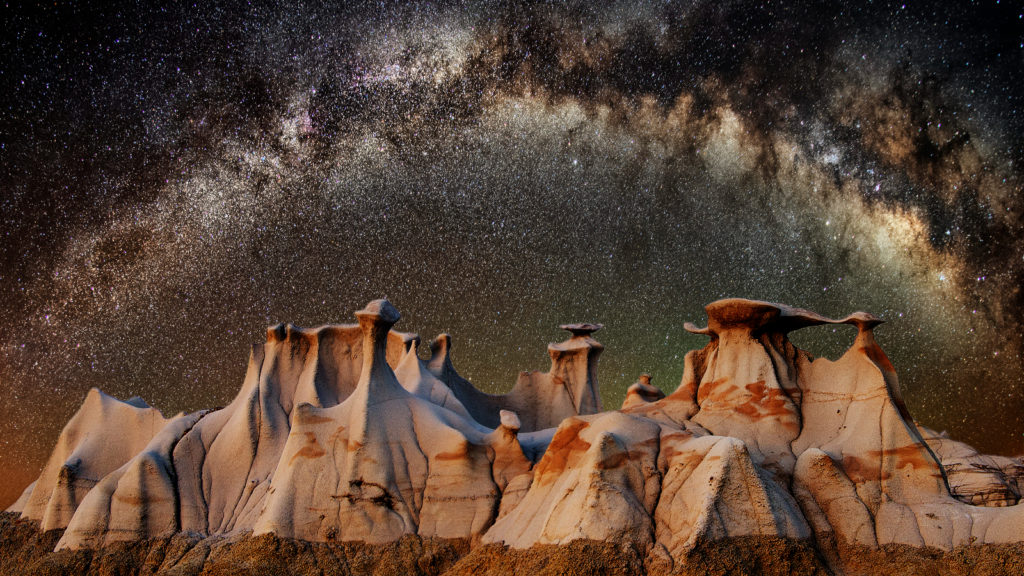
According to the Internet





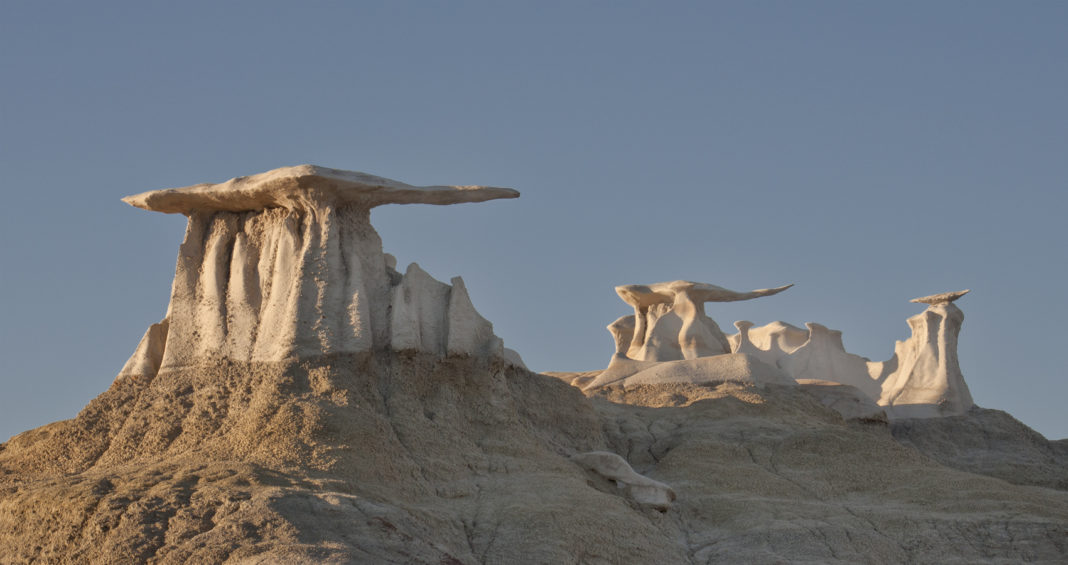


![[HONORARY PROFESSOR OF RECORD FOR PRACTICE AND EMPIRICAL RESULTS – 2024] RECORD HOLDER CHU BAO QUE (BAC GIANG PROVINCE, VIETNAM)](https://worldmark.world/wp-content/uploads/2024/05/z5401509010514_2898fa0bcee3af78744ceb5f3984a5c8-218x150.jpg)






